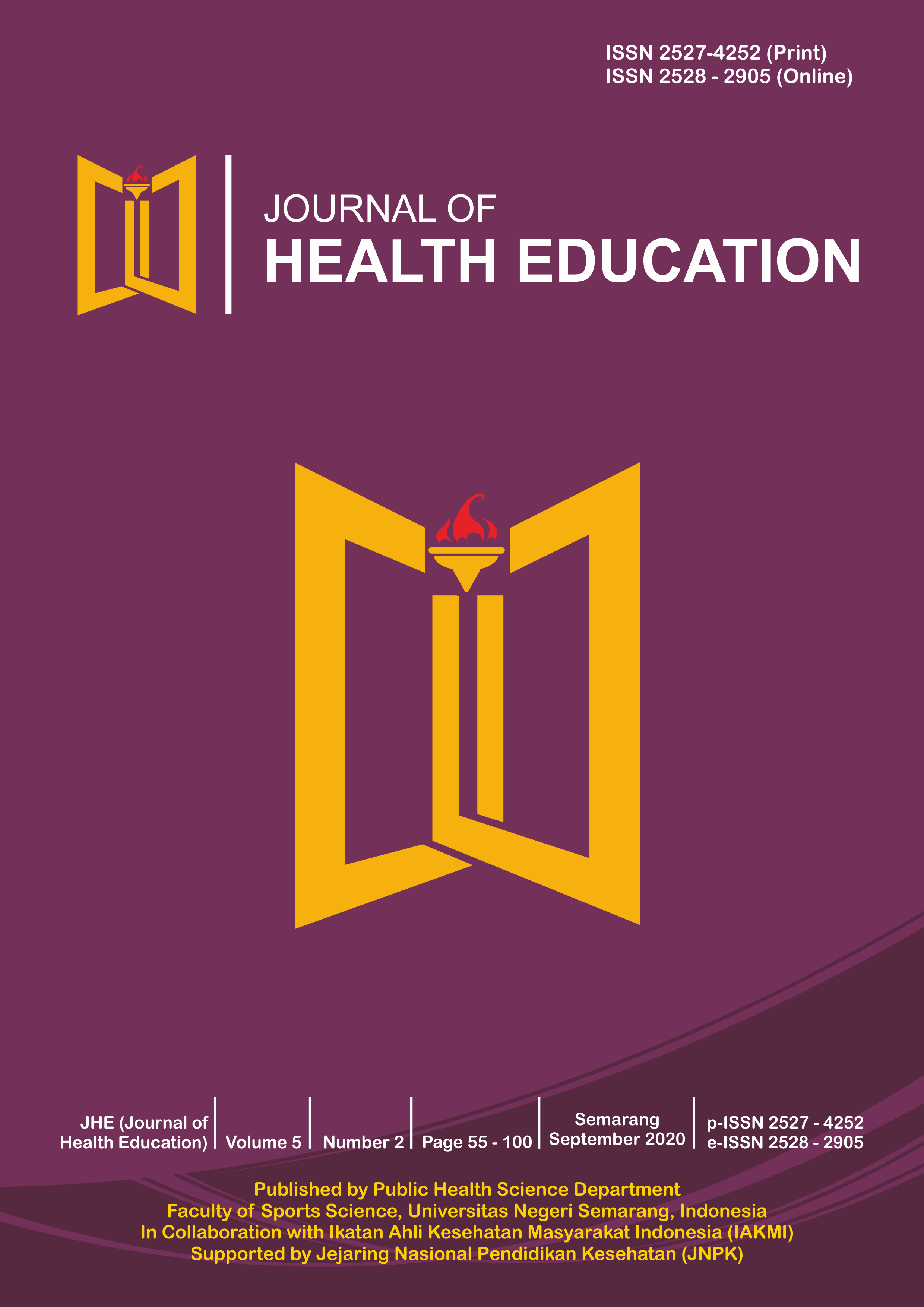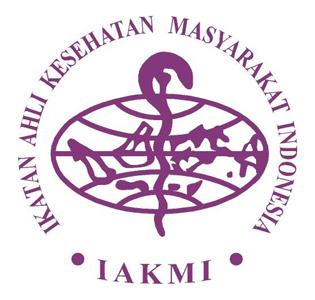Author Guidelines
The article is the result of research study in health education. Article can be written in Indonesian or English. Article is written by using Microsoft Word processor, with Arial font and size 11, 1.5 spacing, 2 cm margins on all sides. Formula and equation are written by Microsoft Equation. Number of pages are 7-14, A4 paper size, in a single column. Article is submitted online to the editorial staff through https://journal.unnes.ac.id/sju/index.php/jhealthedu/user/register,
- Research result article consists of:
Title, author's name, abstract in Indonesia and English, key words, introductions, methods, results, discussions, conclusions and recommendations, and bibliography.
- Review article consists of:
Title, author’s name, abstract in Indonesia and English, key words, introductions, contents, closings, and bibliography.
Writing Guide
Title
- Title is written in Indonesian language and informative, concise, and not too long or short (5 -12 word).
- Consists of the variables under study and describes the content of the manuscript.
- Title does not contain abbreviations or formulas.
- Author's name is written under the title (without a degree), equipped with institution name and address, and author’s e-mail.
Abstract and Keyword
- Abstract is concisely written, about the most important ideas and contain the problems or research objectives, research method, and research results.
- Written in Indonesian and English language with 150-200 words maximum.
- Keywords contains main words consisting of 3-5 words
Introduction
Introduction is presented in an integrated manner without sub title. It is written in the form of paragraphs with a length of 15-20% of the articles length, and contains:
- Background or research rational
- Theoretical basis (literature review in brief)
- Research objective
Method
Method is written with a length of 15-20% of the articles length and contain:
- The study design
- Data collection techniques and data sources
- Method of data analysis
Results and Discussion
Results and discussion are presented with a length of 60-70% of the articles length. The results represent a major part of scientific articles containing:
- Results of data analysis
- Results of hypothesis testing
- It can be presented with a table or graph to clarify results verbally
- Discussion is an important part of the entire scientific article. The purposes of the discussion are: answer the research problem, interpret the findings, integrate the findings of research into the existing knowledge, and formulate a new theory or modify the existing theories.
- Serial number that is used is number (1), (2), (3), and so on, do not need to use a composite numbers. Hyphens should not change the serial number.
Closings
- Contain conclusions and recommendations.
- Conclusions contain answers to the research questions
- Recommendations refer to the results of research and practical form of action, specify to whom and for what recommendation intended.
- Written in essay form, not in numerical form.
Bibliography
- Contain literatures that are referenced in the content, arranged alphabetically, and written in the Harvard system.
- Fully written, appropriate with the references in the content
- Only load literatures referenced in the content
- Source of references are 80% from literatures published last 10 years.
- References are at least 80% from research articles in journals or research reports.
- Article should refer to the article published in the Journal of Health Education (JHE).
- Reference and Bibliography should be written by using reference management software, preferably Mendeley.
- Bibliography format is as follows:
Example:
Book :
Broer, M.R., & Zernicke, R.F. 1979. Efficiency of Human Movement. Philadelphia : W.B. Saunders Company.
Hartono , S. 1993. Ilmu Kedokteran Olahraga: Pedoman untuk Semua Orang. Jakarta : Binarupa Aksara.
Article in Journals or Magazines:
Saifuddin, A.B. 1997. Issues in Training for Essential Maternal Healthcare in Indonesia . Medical Journal of Indonesia, 6 (3) : 23-31 .
Article in Newspapers:
Republika. March 27, 2005. Bahaya Polusi dalam Ruang, page 2.
Article/news in Newspaper (Without Author's Name):
Tempo Interaktif . March 28, 2004. Malaria, page 4 .
Translation Book:
Beaglehole, R., Bonita, R., & Kjellstroffi, T. 1997. Jenis-jenis Penelitian, Dasar- Dasar Epidemiologi. (translation). Gadjah Mada University Press, pages 53-92.
Thesis, Dissertation, or Research Report:
Lactuamury, S.R. 2001. Hubungan Keterlambatan Merujuk dengan Kematian lbu di RSUD Tidar Magelang Jateng. Thesis. Yogyakarta : UGM Postgraduate.
Conference Papers, Workshop, or Refresher Course:
Aswar, A. 2002. Strategi Operasional Desentralisasi RAPGN. Paper was presented at the National Seminar and Congress Pergizi Pangan Makasar, April 13-15.
The unpublished article will not be returned, unless on the request of the author.






